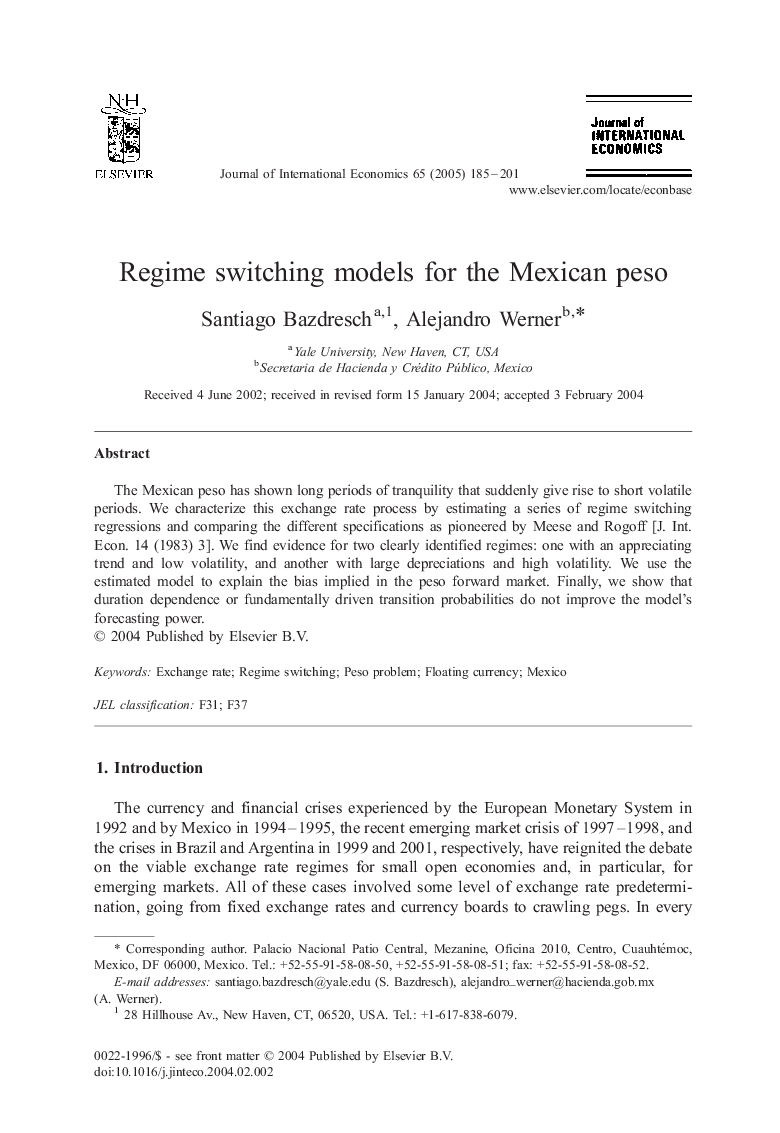| Article ID | Journal | Published Year | Pages | File Type |
|---|---|---|---|---|
| 10477355 | Journal of International Economics | 2005 | 17 Pages |
Abstract
The Mexican peso has shown long periods of tranquility that suddenly give rise to short volatile periods. We characterize this exchange rate process by estimating a series of regime switching regressions and comparing the different specifications as pioneered by Meese and Rogoff [J. Int. Econ. 14 (1983) 3]. We find evidence for two clearly identified regimes: one with an appreciating trend and low volatility, and another with large depreciations and high volatility. We use the estimated model to explain the bias implied in the peso forward market. Finally, we show that duration dependence or fundamentally driven transition probabilities do not improve the model's forecasting power.
Related Topics
Social Sciences and Humanities
Economics, Econometrics and Finance
Economics and Econometrics
Authors
Santiago Bazdresch, Alejandro Werner,
